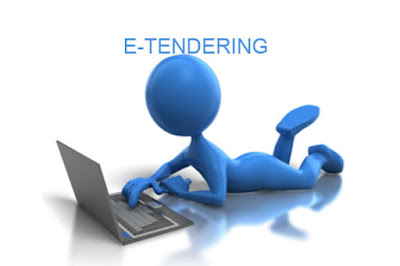E-Tendering is essentially a component of the online purchasing process, primarily to facilitate a more efficient search for suppliers. None of the programs used are on the buyer’s or supplier’s computer. However, the entire exchange of documents from the notification of the requirement to the execution of the contract is carried out over the Internet. Throughout this post, we will provide a broad overview of what is e-Tender and how it works.
This all-digital framework automates the bid management process, enabling a more controlled and seamless sourcing that allows the buyer to easily manage and evaluate bids.
Why is e-Tender Important?
E-tender is an essential part of e-contracting that streamlines your processes. As a result, many organizations cannot dispute how much it benefits them.
This is important as organizations can prioritize qualified vendors and competitive bids over their advantages. It’s also a paperless transaction with well-organized steps and a central online document repository for purchases.
Contract and project management benefit from a centralized electronic document archive containing document requirements, digital offer papers, BDTender orders, and other contracts. In addition, the e-tendering process for large orders ensures that sourcing requirements are well documented and that competitive bids are found through a public tender with the broader participation of potential suppliers.
Steps in E-Tender
The e-tendering process consists of just a few steps. The first step is creating a detailed overview of what exactly the organization is looking for. The organization must clearly state the goods and services needed to avoid misunderstandings and to meet your expectations.
The second stage begins once the organization has determined its requirements. It is now time to link them and submit them to the supplier group. The e-tendering procedure is carried out using an online platform.
The third stage of the e-tendering process is for the e-tender to respond to the organization’s RFQ. When suppliers feel they can fulfill policy and contractual criteria, they bid. After that, the company can award the contract to its hand-picked supplier or vendor.
Types of eTender
The type of bidding required is decided by the nature and complexity of the project, the knowledge required to handle the project needs, and the applicable bidding legislation. The following are some popular forms of e-Tendering:
Open tenders
Open tenders are the most common type of tenders made by government, private, and nonprofit organizations. The contracting authority publishes the tender notices on the official website. The announcement consists of the key data of the project, the last submission date of the tender, the requirements for the tender, the warranty obligation, the documents to be submitted with the tender, and other relevant information. Open tenders are posted on the bidder’s organization’s website, government organization procurement pages, and tenders portals.
Selective Tendering
Selective tendering is a tender in which bids are solicited from only a few selected suppliers. This is done to improve the quality of the offer and to reduce the time required to evaluate the offers. The authority responsible for issuing the tender documents makes a pre-selection of several suppliers and only sends the tender documents to these selected suppliers. This process is used for specific projects that require extensive experience and knowledge.
Negotiation Tendering
This tendering is used for projects that require specialized services. They are most commonly found in construction and engineering. The customer contacts a contractor directly and negotiates the price and other terms of the project. This process is typically used for a single contractor and can sometimes be scaled up to three contractors.What are the benefits of eTenders?
The manual procedure can be time-consuming and inconvenient, often taking three months or more. This can become very expensive for both buyers and suppliers. E-tendering may be a preferred option for buyers for the following reasons:
Increased Cost Savings
With less process time, manual transaction effort, and paperwork, you can achieve significant savings compared to the manual process.
A structured and transparent process
Opportunities, documents, and notices can be published on any e-Tender platform you use, simplifying collaboration with your vendors. Changes, updates, and questions can also be date and time-stamped, creating a full audit trail of every action and giving you complete transparency.
More productive bid evaluation
All bid information can be managed through a single portal. Therefore, providers can be compared and evaluated here instead of using e-mails and individual document printouts to evaluate responses. Using an e-Tendering system helps to process in a uniform and collective manner to ensure minimum distortion.
Kickstarter for digital transformation
Vendor information collected through e-Tendering platforms can be used to upgrade an organization’s financial system or directly into vendor/contract databases.
They also provide procurement professionals with useful management information and the breakdown of the procured product categories. The average duration of the contract and the value of the contracted expenses is also mentioned.
Disadvantages of E-Tendering
Every coin has two sides, and same we can say for e-tendering. To create the most effective digital e-tendering, you need to know the cons of the process which are mentioned below-
Word Limit
The bidding process involves a series of requests. However, electronic bidding has a word limit that makes it difficult to say things or circumvent predefined criteria.
Prescriptive structure
This leaves limited room for innovation/expression. No supporting documents are attached for the presentation or explanation of the offer.
Technical problems
With regular data and work storage, electronic portals can become slow and unresponsive at any time. This is often the case when too many bidders access the portal at the same time, during the bidding period.
The Bottom Line
Tender is a term commonly used in the fields of business, finance, and investment and may have multiple meanings. In a commercial environment, tender refers to the process by which governments solicit suppliers to bid for the right to work on government projects or to supply goods or other services. I hope this article gave you a complete idea about what is e-tender.
This article originally published at osdigitalworld.com

Comments
Post a Comment